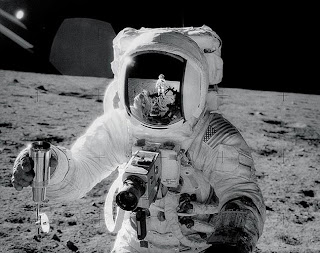Perry does a stupendous job of taking us through the evolution of various types of games including game boarding, basketball (from stick figures to life-like player where you can see the sweat rolling off his brow), boxing, StarWars, and 1st-person shooter games. It's easy to see how things on the screen can be mistaken for reality.
The most effective part of the talk was the excerpt he played from Michael Highland's film, As Real As Your Life. Highland explains that he was born in 1984 (the beginning of the Millennial Generation) and his constant involvement with video games has changed his life. The border between his real world and video world have blurred. His interaction in the virtual world is helping mold who he is in the real world. He has driven over 32,000 miles in virtual cars while he has only put 25,000 miles on his real car.
How will this affect our learning? It has a dramatic effect in who we are and what we do. Does it make us a better or worse person? No. Learning through video games is no different than learning through real life except the learner/teacher has some control over the situations where the learner is learning. This can provide a much richer and more skilled learner because s/he can be experienced beyond his/her years. Look at how this is used with astronauts, pilots, police officers, soldiers and doctors. They have learned to react or proact in situations they have never before experienced in real life. At least when they experience it in the virtual world, there are few repercussions from mistakes that they may experience.
The gaming world can provide a rich experience for learners inside and outside of the classroom. The only problem is that it can be quite complex and more difficult to create such an environment. It is much easier to simply create a lecture with a few poorly-made PowerPoints. The advantage is that once the gaming environment has been created, it can reused without much more work on the part of the teacher. It should be continually reviewed and updated as necessary, but it is not like creating a whole new learning situation.



